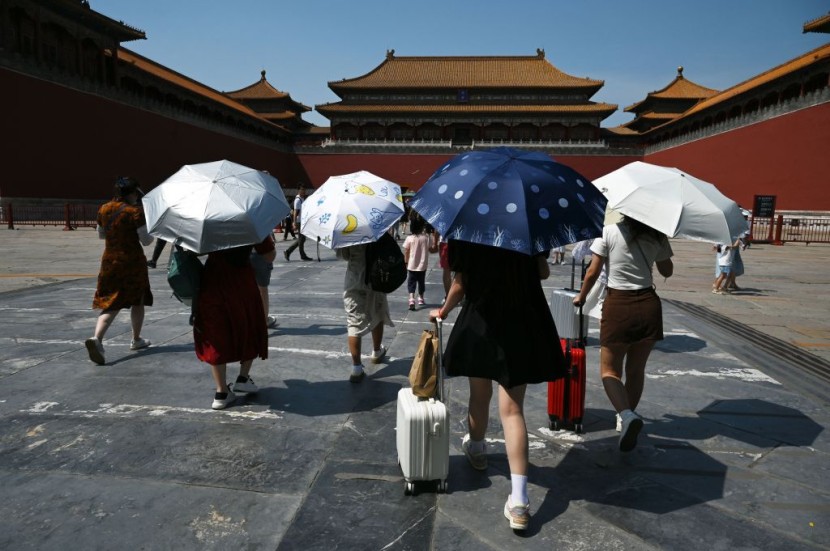
Due to the increased risk of crop damage and power outages caused by prolonged heatwaves and the possibility of catastrophic floods, China issued an extensive list of weather warnings.
On Sunday, July 9, the Ministry of Agriculture and Rural Affairs and the China Meteorological Administration (CMA) advised that the continued hot weather could harm rice production. This urges the authorities to water the fields to lower temperatures and prevent premature ripening, especially in the south, as reported by South China Morning Post (SCMP).
Threat of Heatwaves and Massive Floods
Over the next 10 days, most of southern China can reportedly expect temperatures exceeding 35 degrees Celsius, with some areas of Hunan, Jiangxi, Zhejiang, and Fujian reaching 40 degrees Celsius.
The CMA posted an amber heat alert on Sunday morning, the second highest on a scale of three. This warned the residents in Hebei, Henan, Shanxi, Zhejiang, Fujian, and Inner Mongolia that temperatures were anticipated to rise beyond 40 degrees Celsius.
It suggested that individuals in the affected regions stay indoors as much as possible and that those who had to work in the heat cut down on their hours.
As the increased demand for energy taxed the electrical system, it was also a reminder to fire officials to remain on high alert.
Since June, much of China has been experiencing a severe heatwave, with forecasts predicting that it might be even more harsh than the weather that plagued the country for almost two months in 2017.
Meanwhile, the provinces of Inner Mongolia, Liaoning, Jilin, Heilongjiang, Anhui, Jiangsu, Hubei, Chongqing, and Guizhou are on high alert for floods from the Ministry of Water Resources. In Jiangsu alone, there are close to 6,000 inspectors of embankments.
It said that since Thursday, July 6, heavy rain in Jiangsu, Jiangxi, Liaoning, Guizhou, and northern Inner Mongolia had caused water levels in 12 rivers to rise over the alert threshold.
See Also: Earth's Hottest Day on Record: July 3, 2023 Exceeded Average of 17°C, Breaking Previous Record
Evidence of Global Warming's Impact
According to SCMP, the CMA's Blue Book on Climate Change of China (2023) reports that last year established records for climate change indicators, such as average summer temperature, coastal sea levels, and glacier retreat. This appears to be a sign that the country is feeling the full force of global warming.
The deputy director of the National Climate Centre, Yuan Jiashuang, was recently mentioned in the Shanghai-based news site The Paper claiming that temperatures in China are increasing at a pace far faster than the world average, and the climate system is continuing to warm.
Zhou Bing, the CMA's head specialist in the meteorological service department, told The Paper that El Niño might also be to blame for the recent heatwave.
El Niño is a climatic phenomenon that occurs naturally when the central and eastern tropical Pacific Oceans experience warming of their ocean surface temperatures. The average interval is between two and seven years, and its duration is between 9 and 12 months.
See Also: El Niño Is Here: UN Warns of Possible Deadly Heat Wave It May Bring








